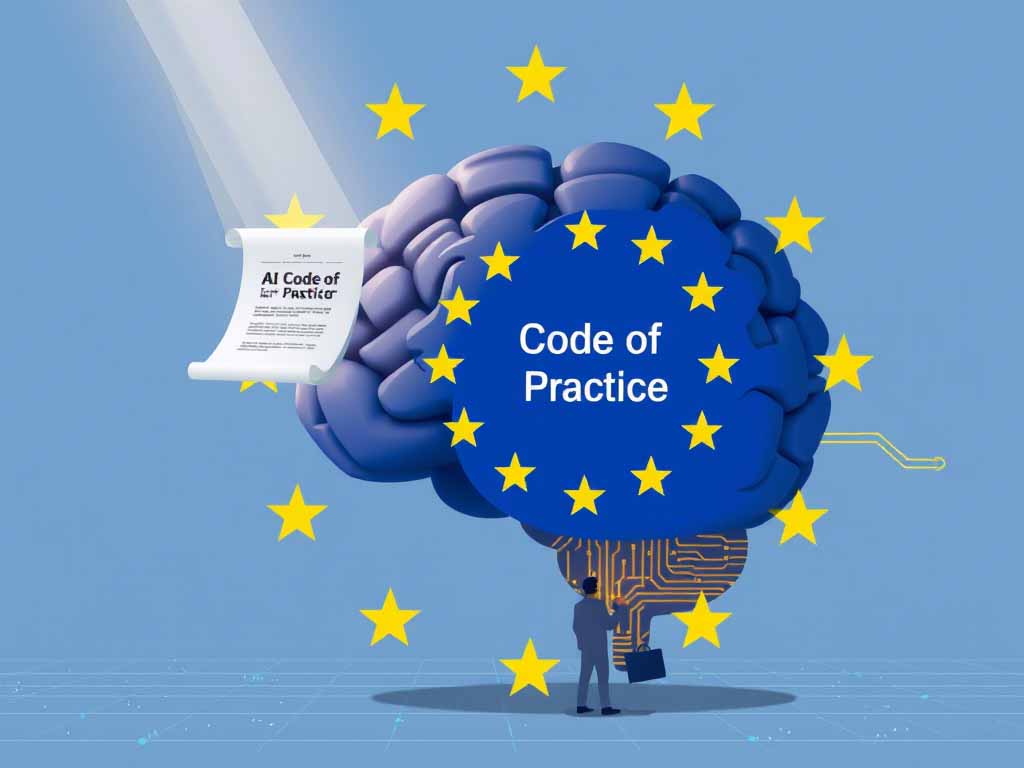The Dawn of a New Era: EU’s Voluntary Code for General‑Purpose AI
Why It Matters Now
- New models launched after August 2025 have one year to comply.
- Existing models get two years before enforcement begins.
The GPAI Code fills the gap between now and then, offering a “bridge to compliance.” It gives developers reliable steps to prep their models in advance, reducing anxiety around shifting regulations.
The Three Pillars of the Code
The framework rests on three core chapters—each aimed at ensuring AI systems are transparent, responsible, and safe.
1. Transparency
Every provider signing the Code commits to documenting key model details: training data summaries, model capabilities and limitations, computational scale, even energy consumption.
The centerpiece is a Model Documentation Form—a template checklist making transparency mandatory but manageable.
Purpose? To empower downstream users, regulators, auditors—and even the public—to understand the nuts and bolts of how these models work.
2. Copyright
This section helps developers navigate the tightrope of copyright law. It requires them to:
- Summarize copyrighted materials used in training.
- Build safeguards to prevent output that replicates protected works unlawfully.
- Set policies addressing how the AI handles copyrighted content .
This is a direct byproduct of Article 53 of the AI Act, which demands transparency in training content .
3. Safety & Security
This one’s reserved for high‑capability providers—the folks behind GPT‑4, Gemini, Claude, and others seen as having systemic impact on society ReutersDigital Strategy.
They must do advanced risk assessments, deploy technical safeguards, and actively monitor for misuse. This ensures that the most powerful models are also the most responsible DLA PiperReuters.
What Makes It Voluntary—but Powerful
At first glance, a voluntarily adopted Code might seem toothless. But here’s the twist:
- Legal certainty: Once formal endorsement arrives—by the Commission and member states—signatories will benefit from rebuttable presumption of conformity under the AI Act Financial.
- Lower administrative friction: Applying the Code often counts as streamlined compliance, saving the time and cost associated with bespoke audits DLA Piper.
In essence, sign on—and you get a VIP pass through regulatory uncertainty.
Who’s In—and Who’s Chafing
Supporters:
- OpenAI is already reviewing for endorsement.
- Microsoft is leaning in, highlighting its commitment to responsible AI.
- Anthropic, Mistral, Google, and other model builders are actively engaged in consultations.
Skeptics:
- Meta (formerly Facebook) has opted out, citing “legal uncertainties” and overreach beyond the AI Act’s scope .
- A coalition of ~45 European companies—including Airbus and Philips—urged a two‑year delay, calling the emerging framework “unclear” and burdensome.
The Commission, by contrast, is unwavering. There’s no “stop the clock” —the Act advances on schedule with GPAI rules starting August 2.
What Happens Next?
- Formal endorsement: The Code needs the official nod from EU governments and the Commission—expected by late 2025 CFO Dive.
- Provider sign-ups: Once endorsed, model creators can opt in. Signing means committing to transparency, copyright care, and risk mitigation.
- Supporting legal guidance: The Commission will soon release detailed Q&A and guidelines on “systemic risk” classification and scope definition.
- Tick‑tock to compliance:
- New models: full compliance by August 2, 2026.
- Existing models: full compliance by August 2, 2027.
Why It Feels Like a Sea‑Change
This Code isn’t just another policy memo—it’s a first-of-its-kind voluntary compass for AI developers. Europe is boldly signaling:
- We value innovation, but not at the expense of rights.
- We want guidance, not just enforcement.
- We trust you enough to keep it voluntary—but we won’t delay when the clock’s ticking.
The Commission’s EVP, Henna Virkkunen, framed it this way:
“Today’s publication … marks an important step in making the most advanced AI models available in Europe not only innovative but also safe and transparent.”
Challenges and Debates Ahead
- Definition of systemic risk: Who decides what qualifies? Providers want clarity—and soon The Ohio Society of CPAsJD Supra.
- Balancing openness and secrets: Transparency is vital—but detailed design docs? Trade secrets hang in the balance The Sun.
- Global alignment: With Meta pulling out and U.S. regulators charting a different path, Europe must ensure it remains open to global collaboration.
Final Reflection
The General‑Purpose AI Code of Practice is more than just policy—it’s a strategic signal. The EU is saying:
- We’re serious about AI regulation.
- We’re don’t want compliance chaos.
- We want to guide, not hinder.
For AI developers and businesses in Europe—and those exporting into Europe—this Code is a golden ticket to credibility, efficiency, and legal clarity. If you’re building or deploying general‑purpose AI models here, now’s the moment to engage, adopt, and align.
Read more about AI
- AI Girlfriends: The New Challenge for Married Couples
- What Happens When 90% of Online Content Is AI-Generated by 2025?
- Voice Cloning Scams: How to Protect Yourself from AI-Powered Fraud
- Meet RoVi‑Aug: How Berkeley’s New Robot Tool Supercharges Learning
- AI In HR Drives Faster Hiring And Better Retention



